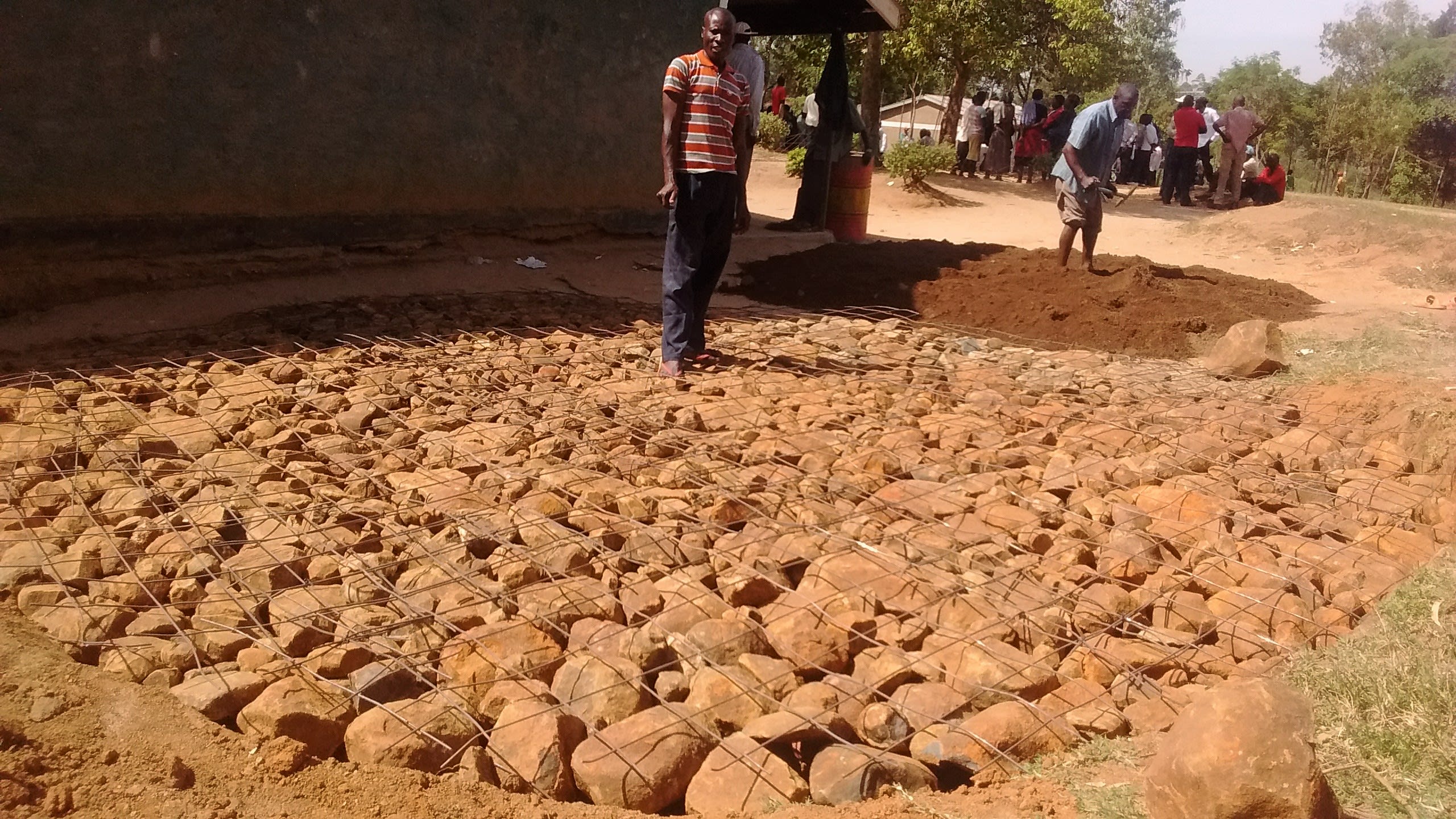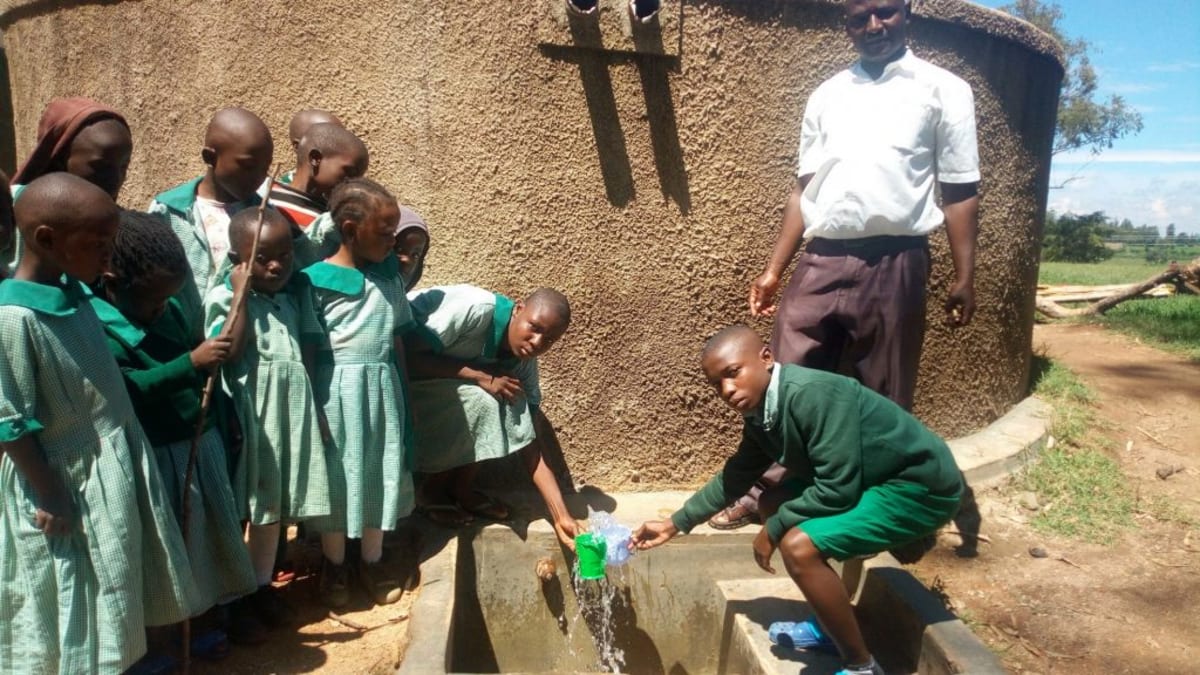This project is a part of our shared program with Western Water And Sanitation Forum (WEWASAFO). Our team is pleased to directly share the below report (edited for clarity, as needed).
Welcome to the School
Saint Andrew’s Kaggwa Eshisiru Primary School was started in the early '50s, but after a short period was closed down due to political issues in the area. It reopened in 1972. The name "Saint Andrews" has been given by the sponsors of the school who are of the catholic denomination.
In the year 2009, Headteacher Benjamin Tsuma joined the school at a time when enrollment was at 800 pupils. The school got so much support that it gave birth to a number of other schools, including Eshisiru Secondary School. The primary school currently has an enrollment of 591 pupils. It also employs a total number of 19 teachers and three support staff. (Editor's Note: While this many people may have access on any given day, realistically a single water source can only support a population of 350-500 people. This school may even be a candidate for a second water point in the future. To learn more, click here.)
On a daily basis, pupils arrive at school around 6:30AM for an hour study hall. After, they undertake general cleaning for thirty minutes. At exactly 8 AM they return to classrooms and start lessons for they day. 12:30 PM marks lunch break when they head home and report back to school at 1:45 PM. When afternoon classes wrap up, students are required to stay for games until dismissal an hour later.
The school is located in a stony area, making any construction work a bit of a challenge. The surrounding community members here are casual laborers at construction sites, subsistence farmers, and small business owners.
This particular institution was recommended by the county minister of education, who resides in the same village just a 5-minute walk from the school compound. She saw the need with her own eyes, as dozens clumped around the well waiting for their turn to fetch water.
Water Situation
There is no water source within school walls, but there is one nearby. It is a well that was installed by unknown persons many years ago, with water that is drawn using a Nira pump. Unfortunately, it seems that poor quality parts were used, including pipes that are contributing to a rusty, dirty taste. The water isn't even clear.
And since this well isn't within the school, community members think of it more as their own well. The adults demand that they be the first in line to fill their containers. Hundreds of these students are pushed to the back of the line and forced to wait for several minutes to get water. There are reportedly hundreds of community members relying on this well, and some even bring wheelbarrows or bicycles to help carry more water.
Not only does the water taste bad, but drinking it often doesn't feel good. Administration reports that students not only waste valuable study time waiting at the well, but suffer from waterborne diseases too.
Sanitation Situation
The pit latrines on school grounds are in poor condition, and many of them are too full to use. When a teacher gave us a tour of these, we noticed that not only were they filthy because of the water shortage, but many were missing doors. There was one latrine block that has been compromised by heavy rains; a hole has washed away ground under the superstructure.
There is one improvised hand-washing station outside a block of latrines; it is a container that hangs from a tree, which only has water when students are able to fetch enough.
Garbage is piled behind classrooms and burned every Friday evening.
Headteacher Benjamin Tuma said, "The health situation is not so good, as many cases of absenteeism are witnessed as the pupils suffer from water-related diseases such as malaria, typhoid, dysentery among others; due to the poor sanitation conditions. This affects the performance of individual pupils and the school at large."
Plans: Hygiene and Sanitation Training and Hand-Washing Stations
Training will be held for two days. The facilitator will use PHAST (participatory hygiene and sanitation transformation), ABCD (asset-based community development), CTC (child to child), lectures, group discussions, and handouts to teach health topics and ways to promote good practices within the school. The CTC method will prepare students to lead other students into healthy habits, as well as kickstart a CTC club for the school. This CTC club will oversee the new facilities, such as hand-washing stations, and make sure they are kept clean and in working condition. The two hand-washing stations will be delivered to the school, and the club will fill them with water on a daily basis and make sure there is always a cleaning agent such as soap or ash.
Plans: Rainwater Catchment Tank
A 50,000-liter rainwater catchment tank will be constructed on school grounds. Teachers, students, and parents will gather the materials needed for this project, including sand, ballast, bricks, and hardcore. This contribution will fuel a sense of responsibility for the school and community to take care of their new facilities. Once materials are mobilized, the WEWASAFO team will arrive to lead the construction effort.
With adequate clean water, the school will have water for drinking, cooking, cleaning, and hand-washing.
Plans: VIP Latrines
Two triple-door latrines will be constructed, providing three new latrines for each gender. Latrine materials will be mobilized the same way as the tank, ensuring the school feels these facilities are truly theirs. And with a rainwater catchment tank nearby, there will be enough water to keep them clean.
School administration and parents are positive that with these new facilities and training, their students’ academic performance will improve. Students will be healthy and empowered to focus on what’s important!

 Rainwater Catchment
Rainwater Catchment
 Rehabilitation Project
Rehabilitation Project

































